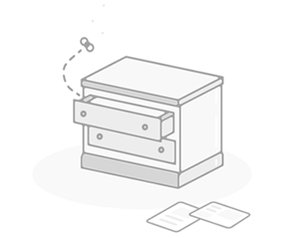My name is Sally Freame but everybody calls me Sally. I'm from Belgium. I'm studying at the high school (3rd year) and I play the Trombone for 3 years. Usually I choose songs from my famous films :).
I have two sister. I like Reading, watching TV (Supernatural) and Taxidermy.
Absolutely, here are some examples of how mixed metals can be incorporated into asymmetrical wedding band designs:
1. Offset Accent Strip: The band could feature a primary metal, like platinum, with an asymmetrical strip or inlay of yellow gold running along one side of the band. The gold accent doesn't have to be centered, but rather positioned off-center for a more unique look.
2. Graduated Fade: Starting with one metal, like rose gold, on one side of the band, the tone could gradually fade or transition into a contrasting metal like white gold on the other side. This creates an asymmetric gradient effect.
3. Scattered Mosaic: Instead of a solid band, the mixed metals could be arranged in an abstract, mosaic-like pattern with random placements of yellow gold, white gold, and rose gold across the band's surface.
4. Clustered Accents: Rather than evenly dispersed, the mixed metal accents could be clustered together on one side or section of the band, leaving the rest of the band in a single tone.
5. Offset Halo: Imagine a white gold band with a delicate halo of yellow gold prongs or bezel settings asymmetrically wrapped around one side or section.
6. Tiered Layers: The band could feature stacked, offset layers of different metals - for example, a rose gold base with a white gold top layer that only covers a portion of the band.
These asymmetrical mixed metal designs allow couples to create truly one-of-a-kind wedding bands that deviate from traditional symmetry. The key is balancing the contrasting metals in a visually striking yet cohesive way.
Black and Blue 6mm Tungsten Carbide Ring - Carbide CUSTOM MADE Engraved Men Women | Wedding bands
Here are some of the most popular tungsten ring styles for men in the US market:
Classic Bands: Simple, clean-lined tungsten bands in polished or brushed finishes are a timeless choice. These range from 4-8mm in width.
Beveled Edges: Tungsten rings with slightly beveled or rounded edges add a subtle design element while maintaining a sleek look. These are available in 6-8mm widths.
Grooved Bands: Rings with parallel grooves or lines cut into the tungsten create an eye-catching textured effect. Groove patterns can vary. Common widths are 6-8mm.
Two-Tone: Combinations of polished and matte tungsten finishes, or tungsten paired with gold or silver accents, offer a modern aesthetic. Widths are typically 6-8mm.
Domed Profiles: Tungsten rings with a slightly domed or curved outer surface provide a comfortable, ergonomic fit. These come in 6-8mm widths.
Carbide Inlay: Some tungsten rings feature a central stripe or inlay of pure tungsten carbide, contrasting with the outer tungsten band. Widths are usually 6-8mm.
Personalized Engravings: Many men opt to have their tungsten rings engraved with dates, initials, or short custom messages, up to about 25 characters.
These represent some of the most sought-after tungsten wedding band styles for men in the US market today. The classic, modern, and customizable options allow couples to find the perfect fit.
What are the key factors to consider when choosing a tungsten ring for a man?
==
When choosing a tungsten ring for a man, there are several key factors to consider:
Width:
Men's tungsten rings typically range from 4mm to 8mm in width.
The most common widths are 6mm and 8mm, as they provide a substantial, masculine look.
Consider the wearer's hand size and personal preference when selecting the width.
Comfort:
Tungsten is a very hard and rigid metal, so comfort is an important factor.
Look for rings with a comfort-fit interior, which has a slightly rounded inner edge to make it easier to put on and take off.
Some rings also feature a domed or curved outer profile for added comfort.
Finish:
Tungsten rings are available in a variety of finishes, including high-polish, brushed, and matte.
Polished tungsten has a sleek, shiny look, while brushed and matte finishes have a more subtle, contemporary appearance.
The finish can also affect the durability and scratch-resistance of the ring.
Design:
Classic plain bands are a timeless choice, but there are also more elaborate designs available.
Popular options include rings with beveled edges, parallel grooves, or two-tone finishes.
Men may also opt for personalized engravings, such as initials or a wedding date.
Sizing:
Tungsten rings have very little flexibility, so it's crucial to get the correct size.
Measure the wearer's finger carefully and consider any fluctuations in finger size throughout the day or year.
By considering these key factors, you can choose a tungsten ring that not only looks great but also provides a comfortable, durable fit for the groom.

 This seller has no active listings
This seller has no active listings